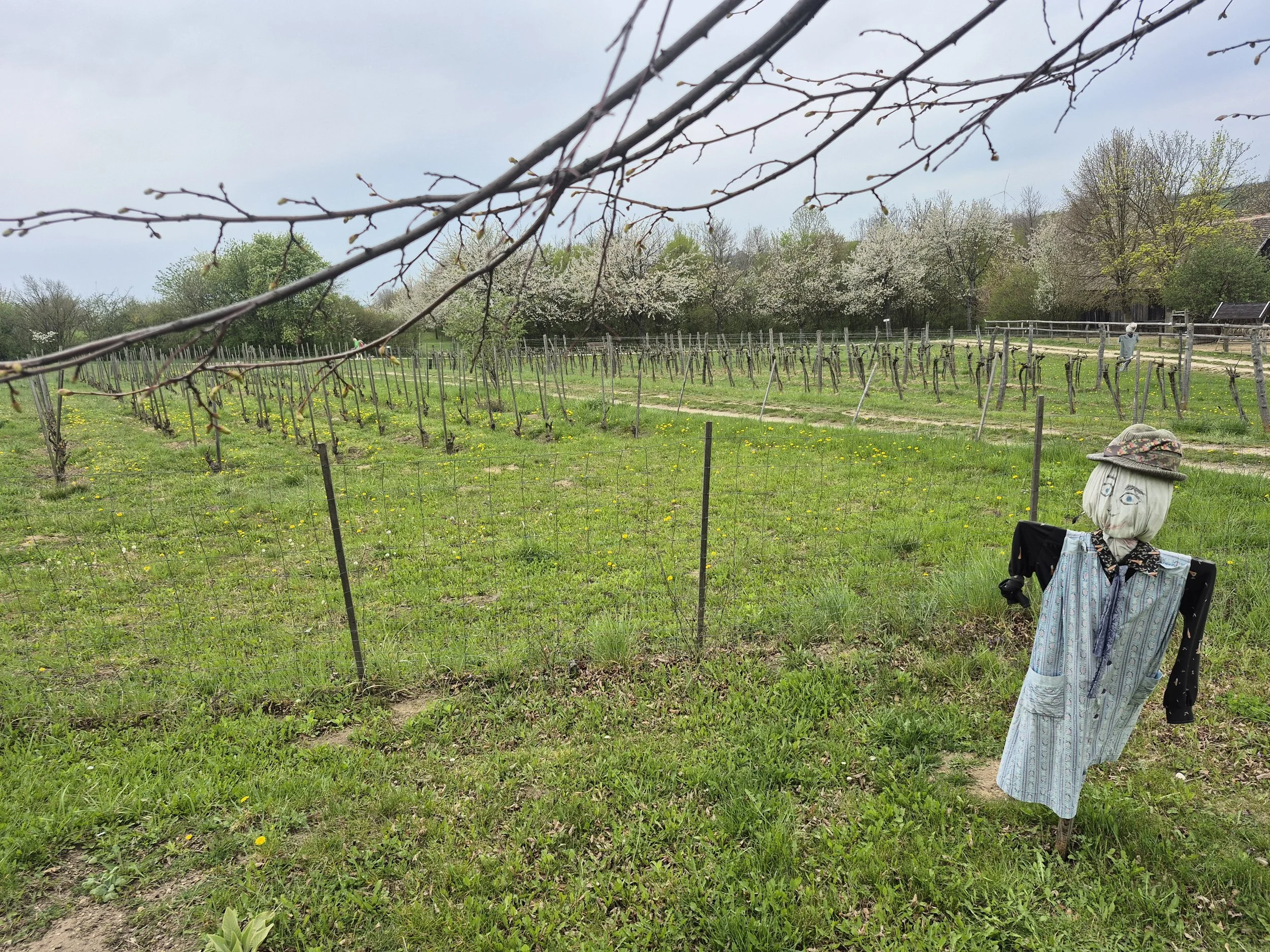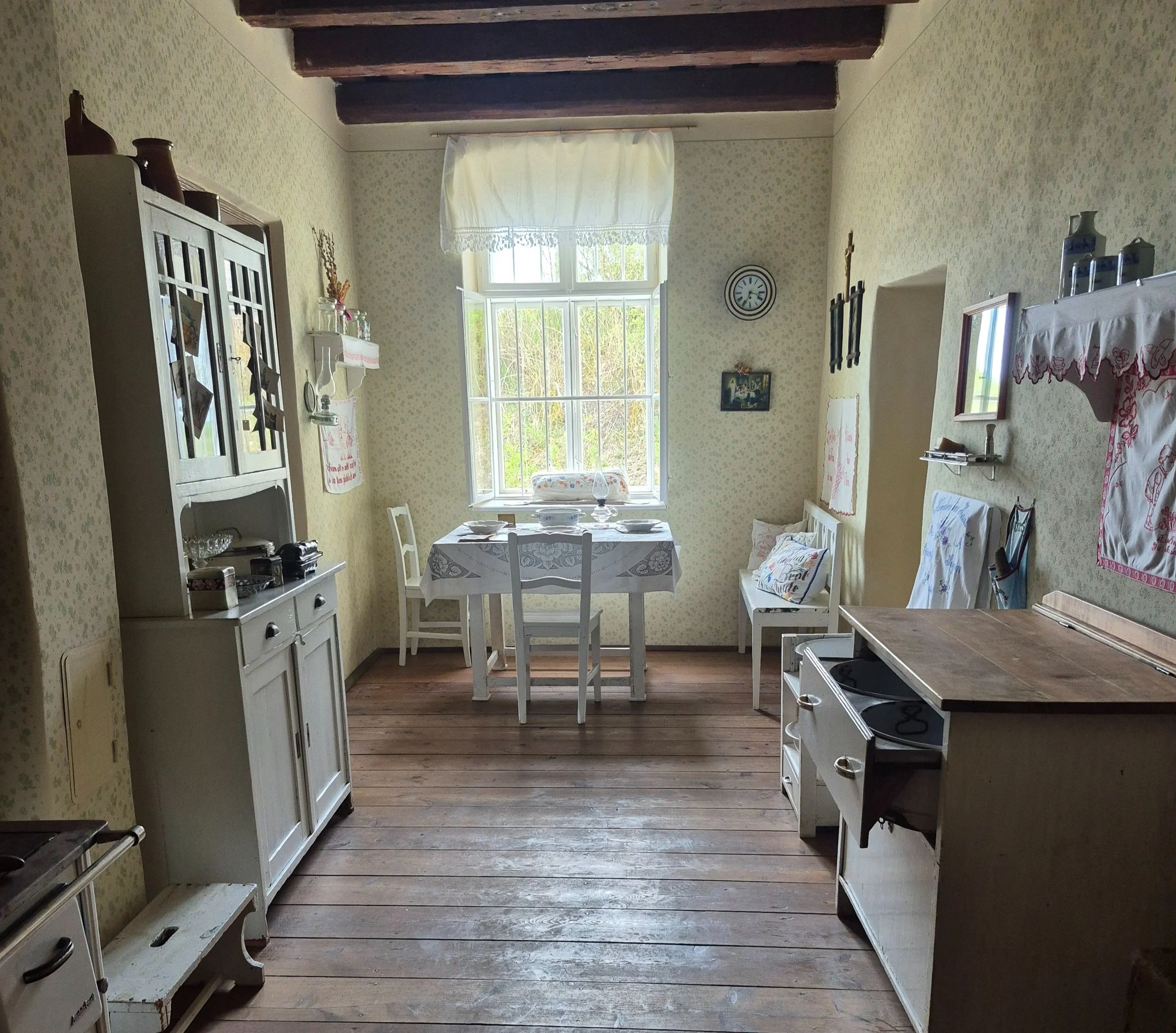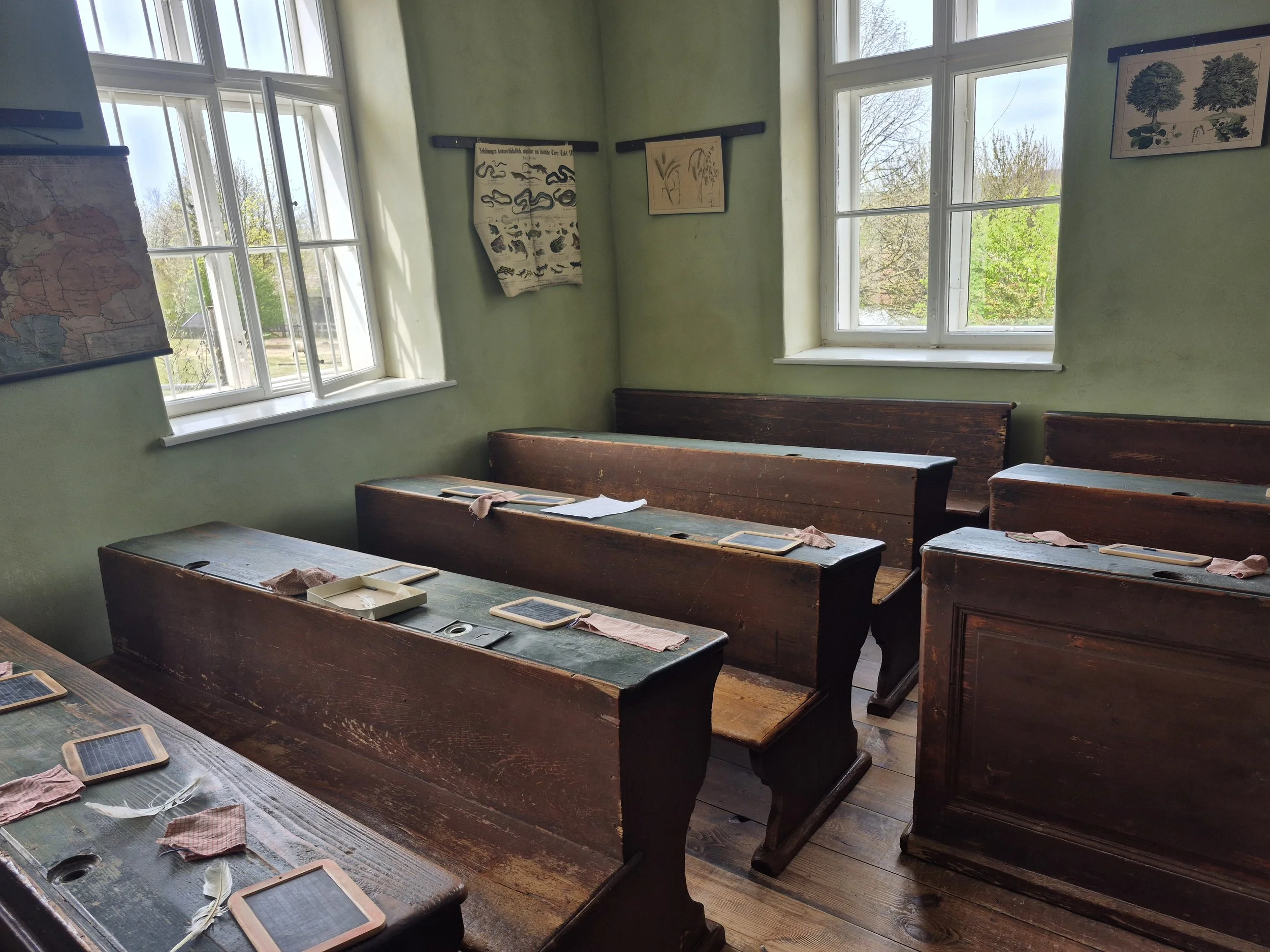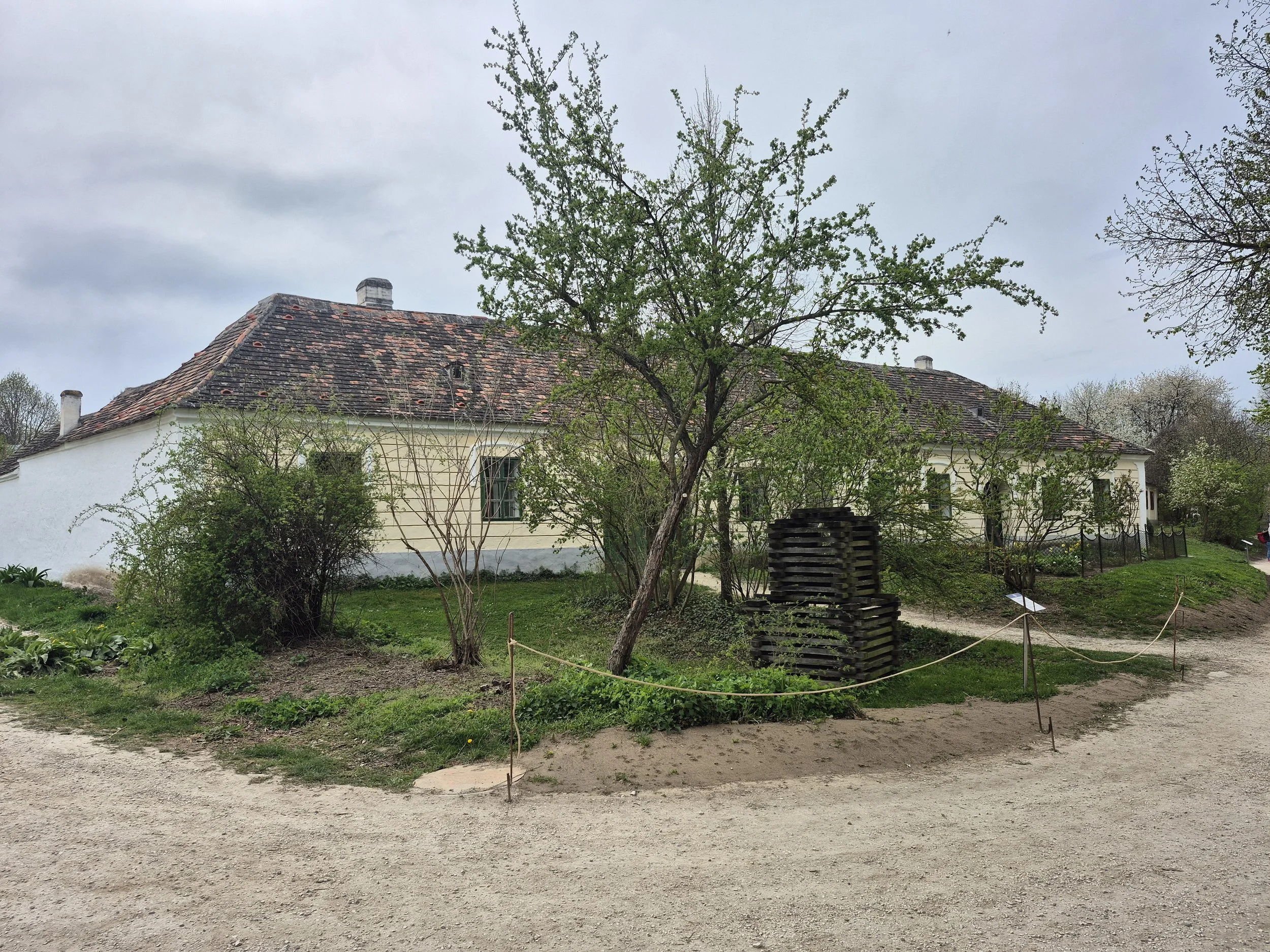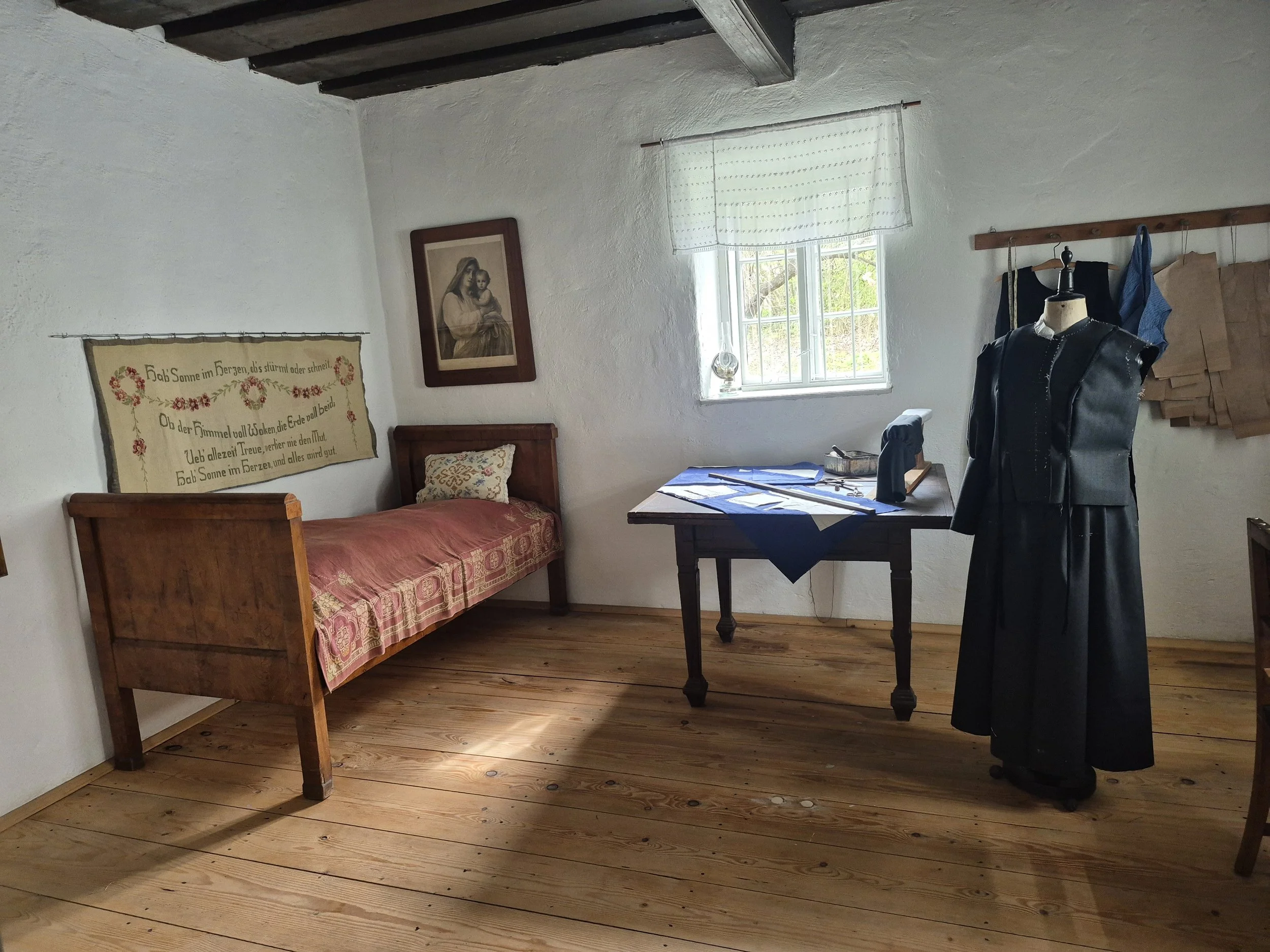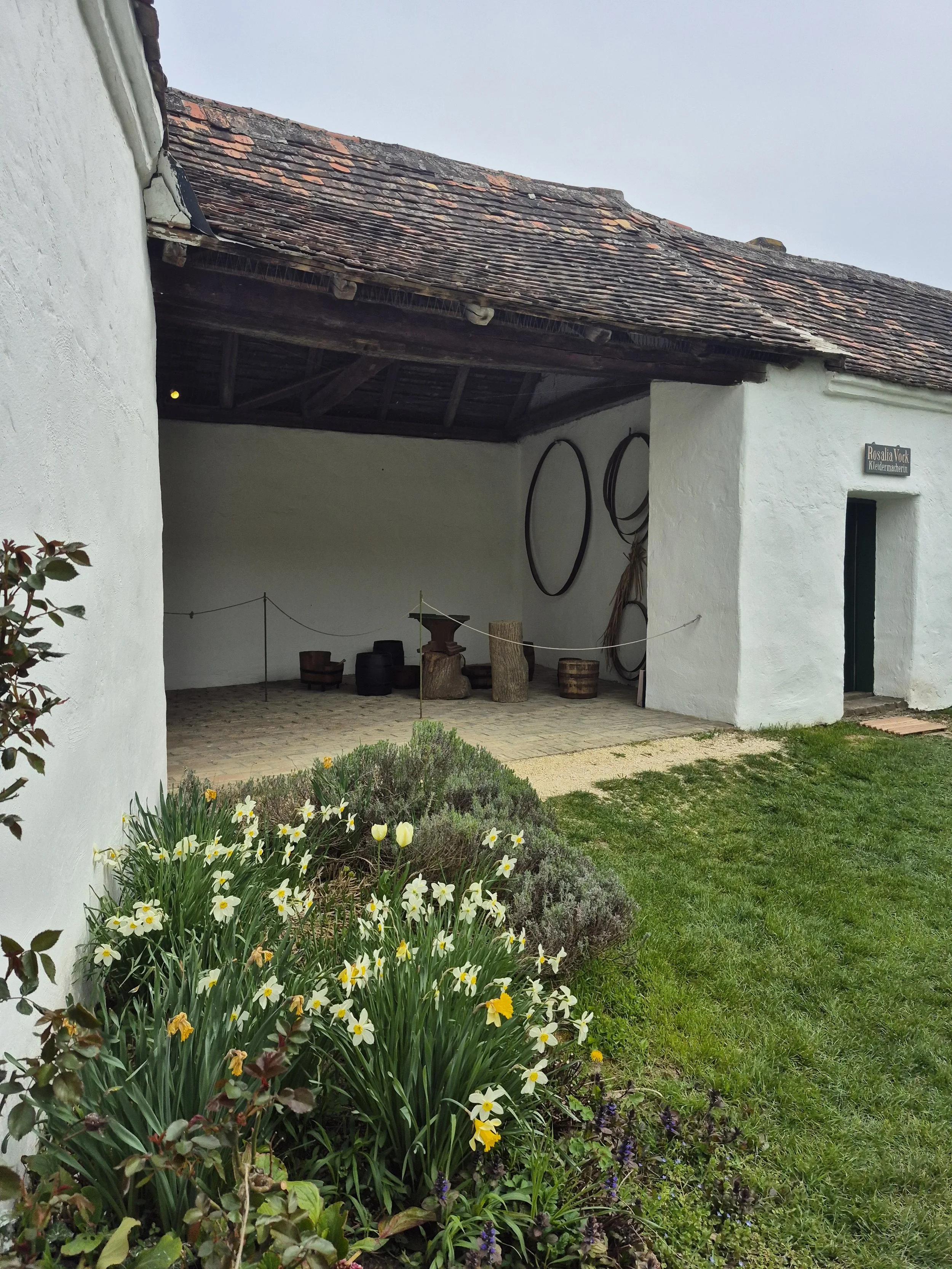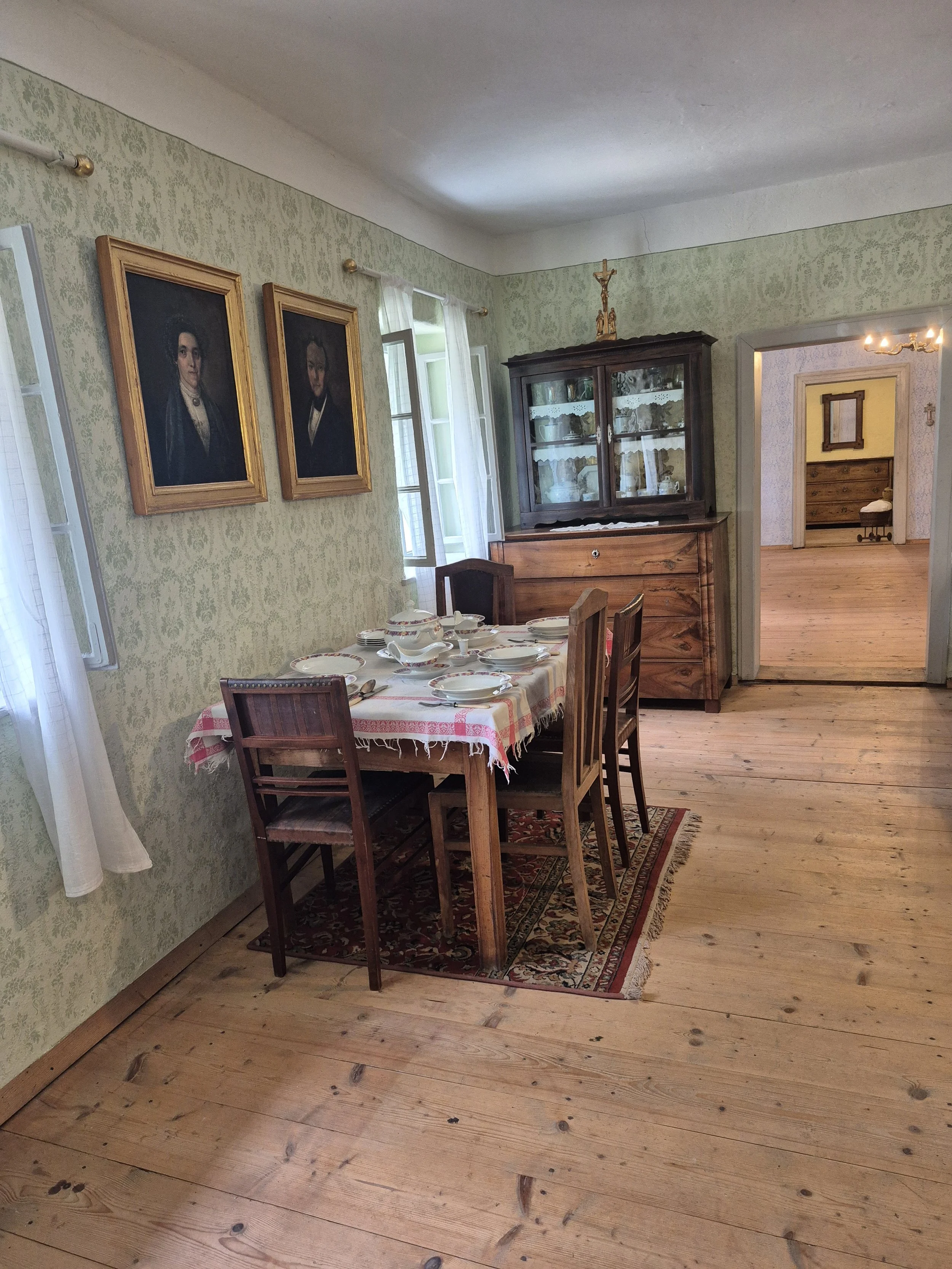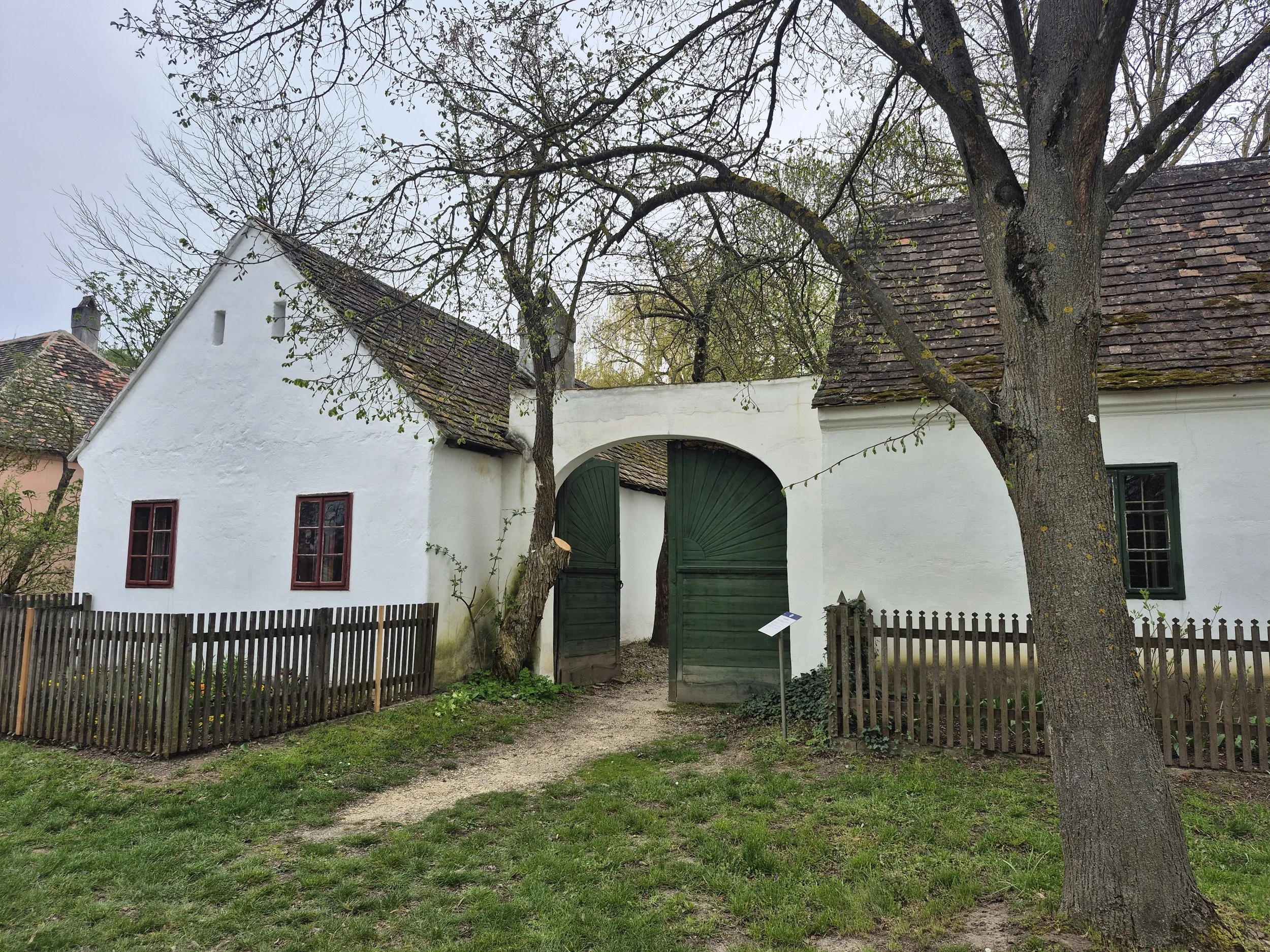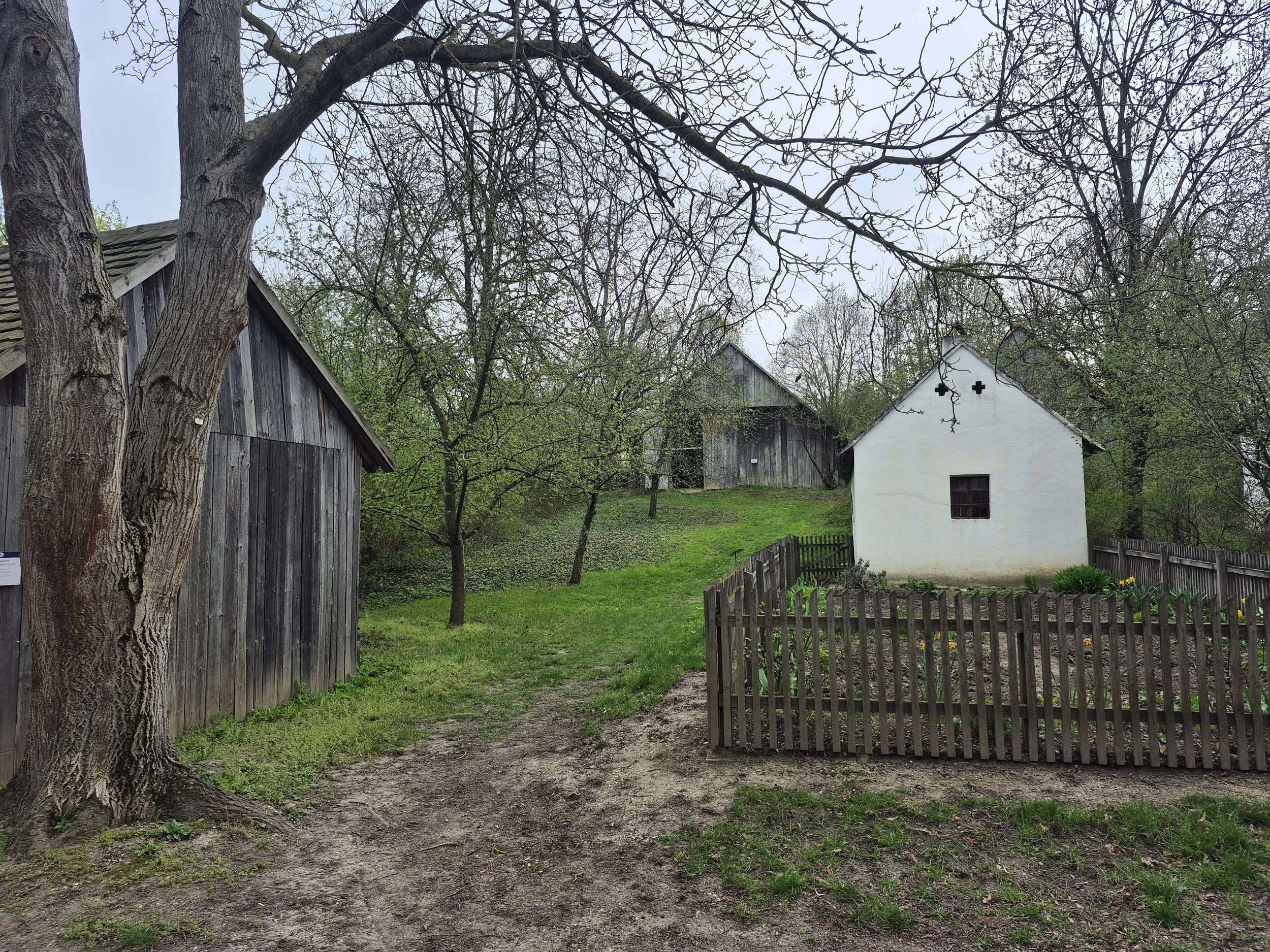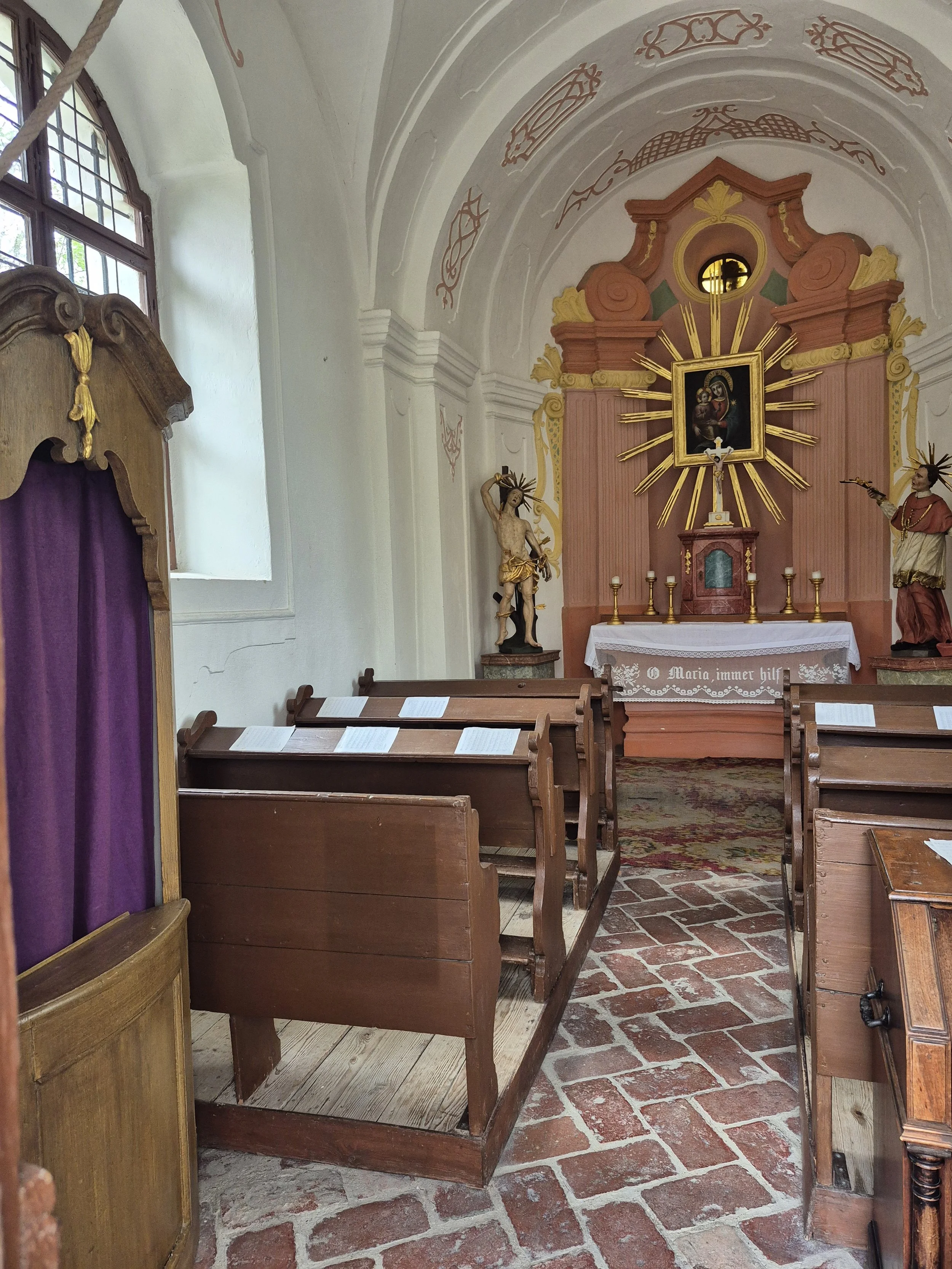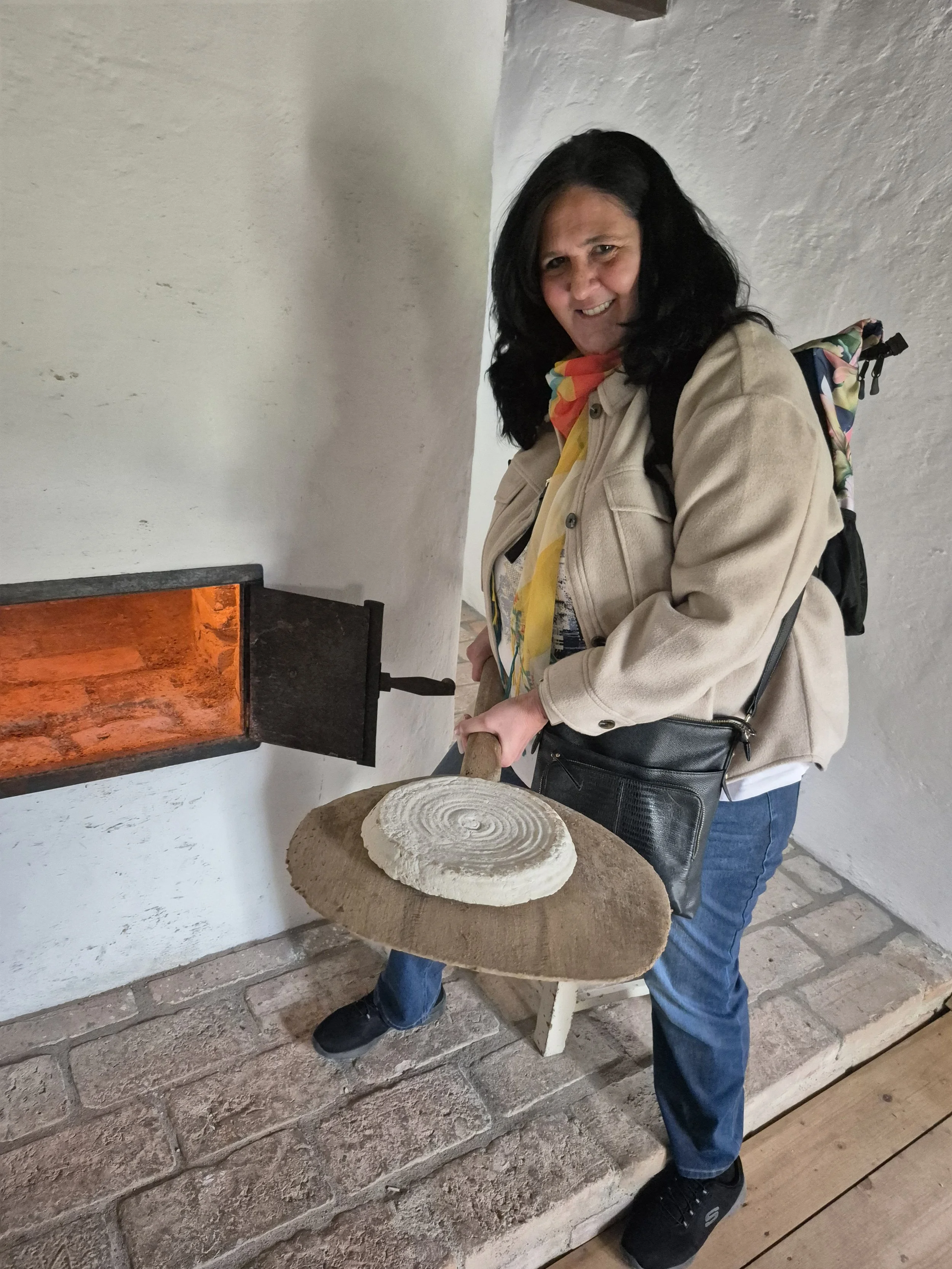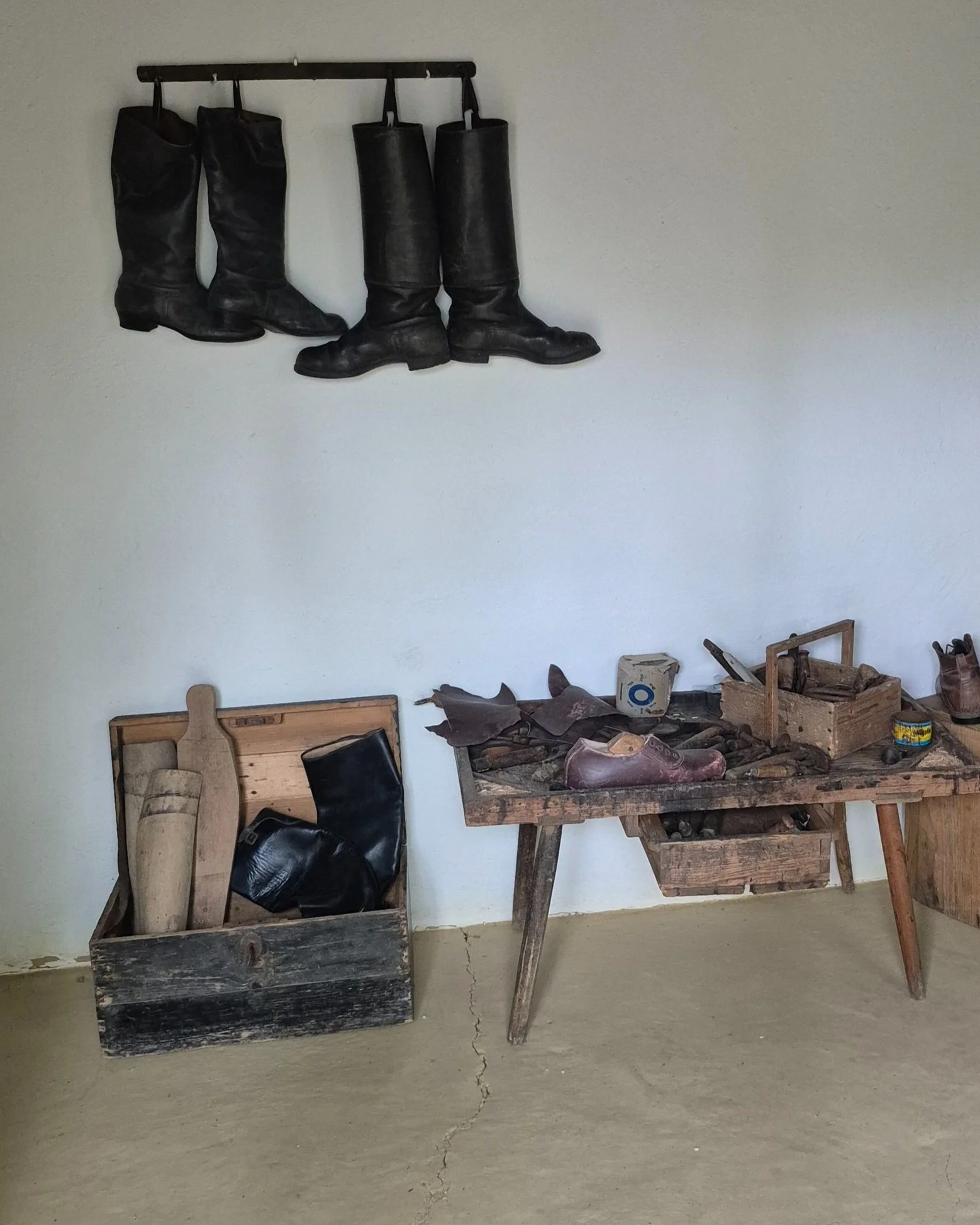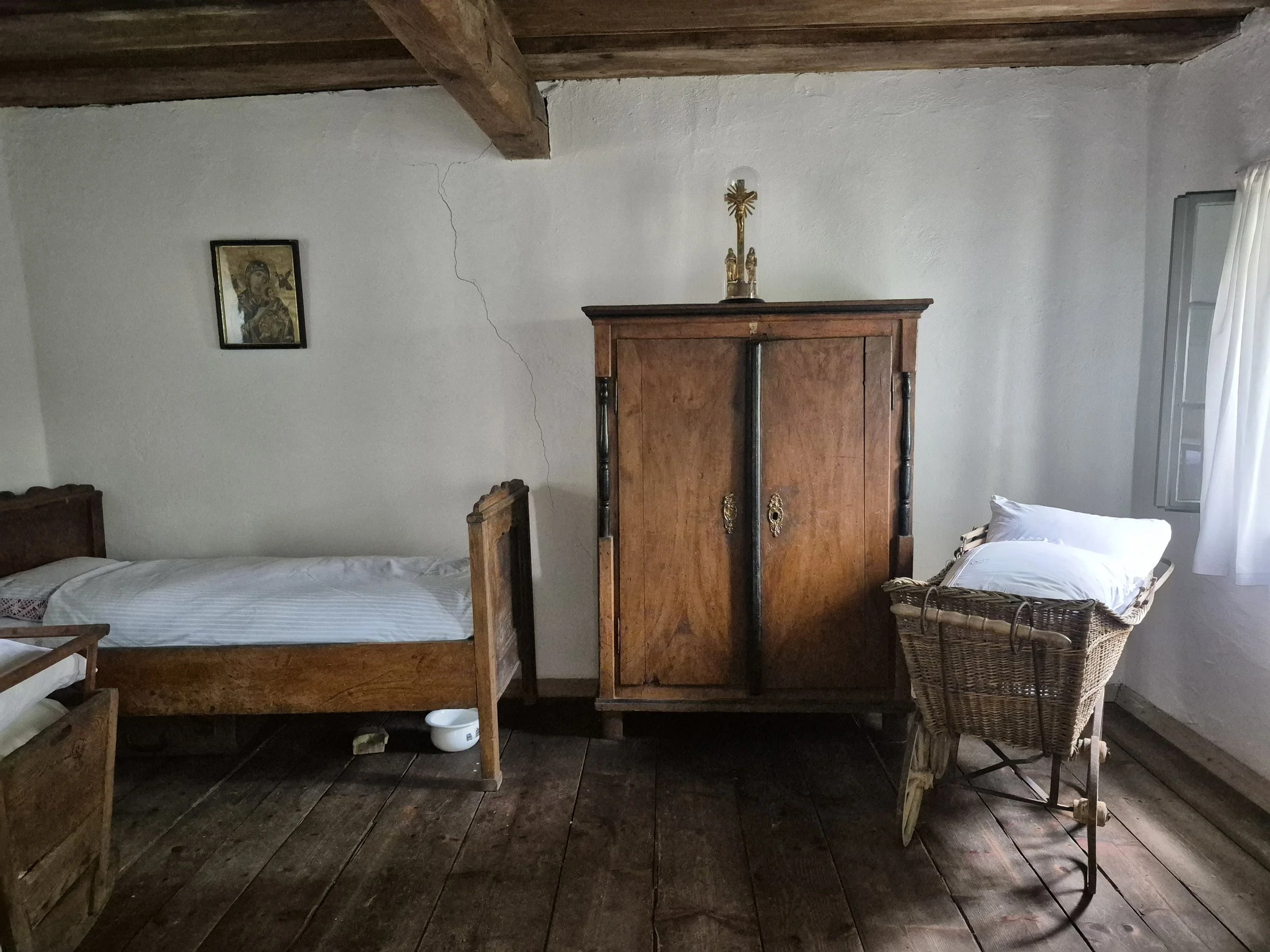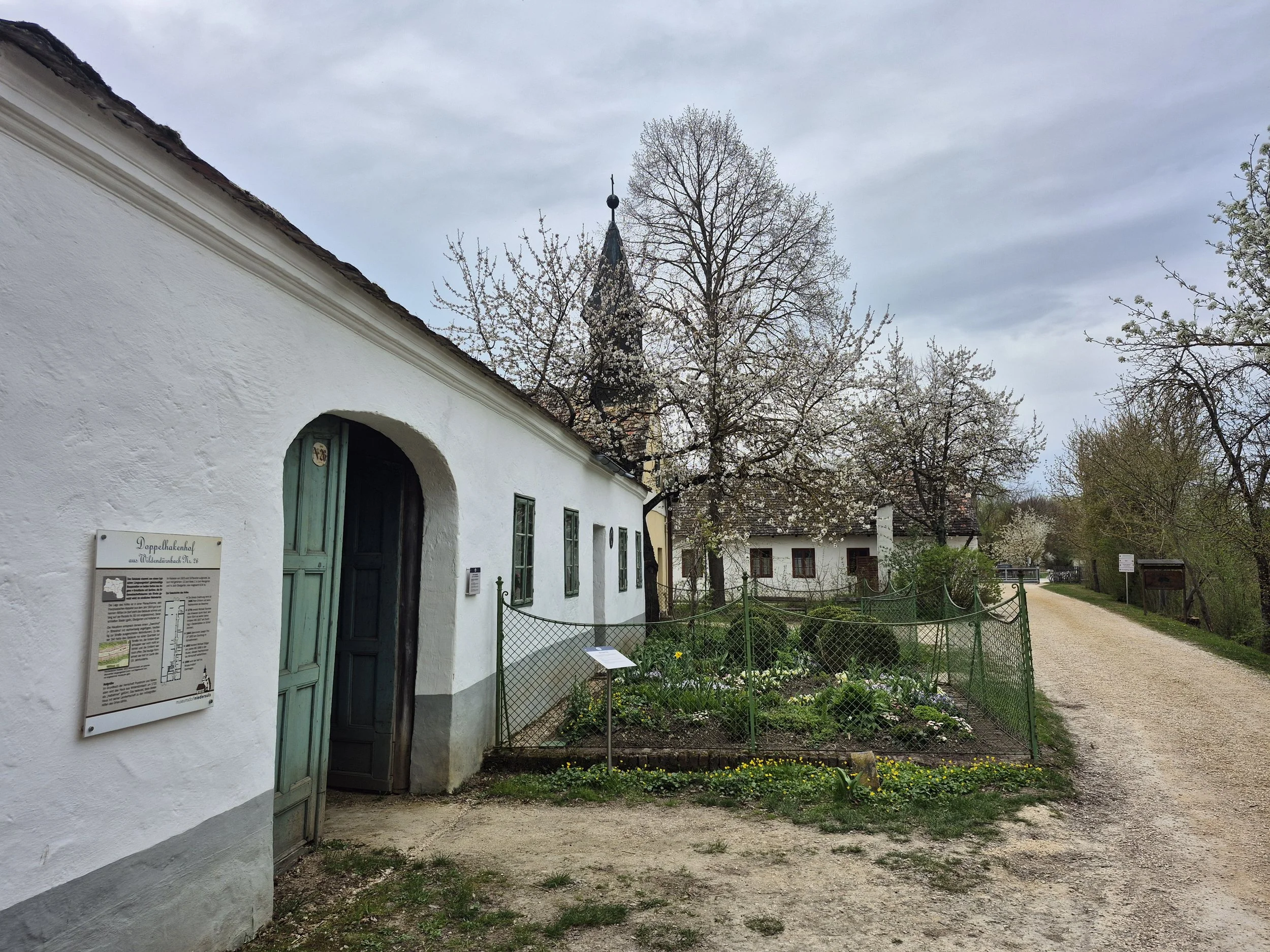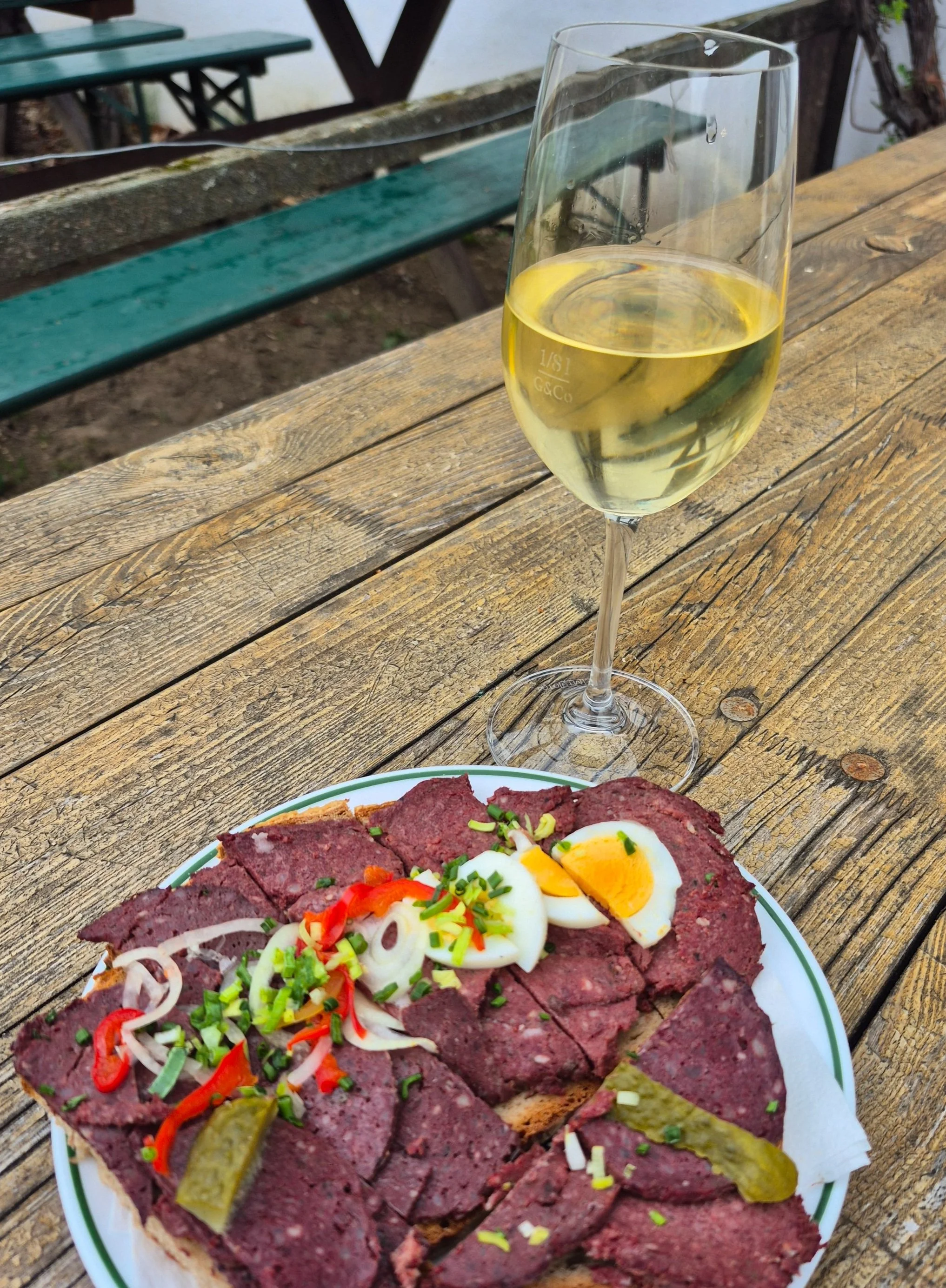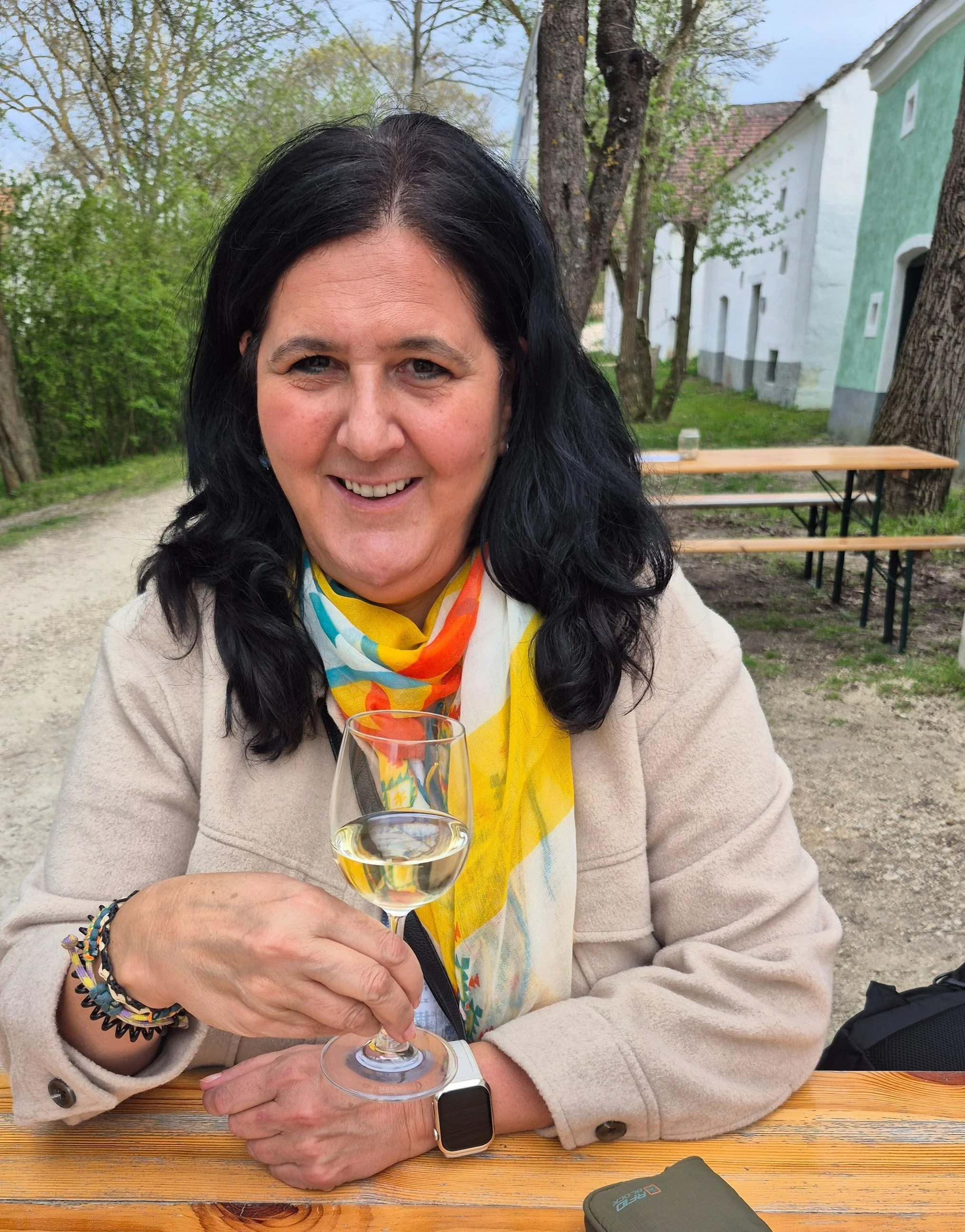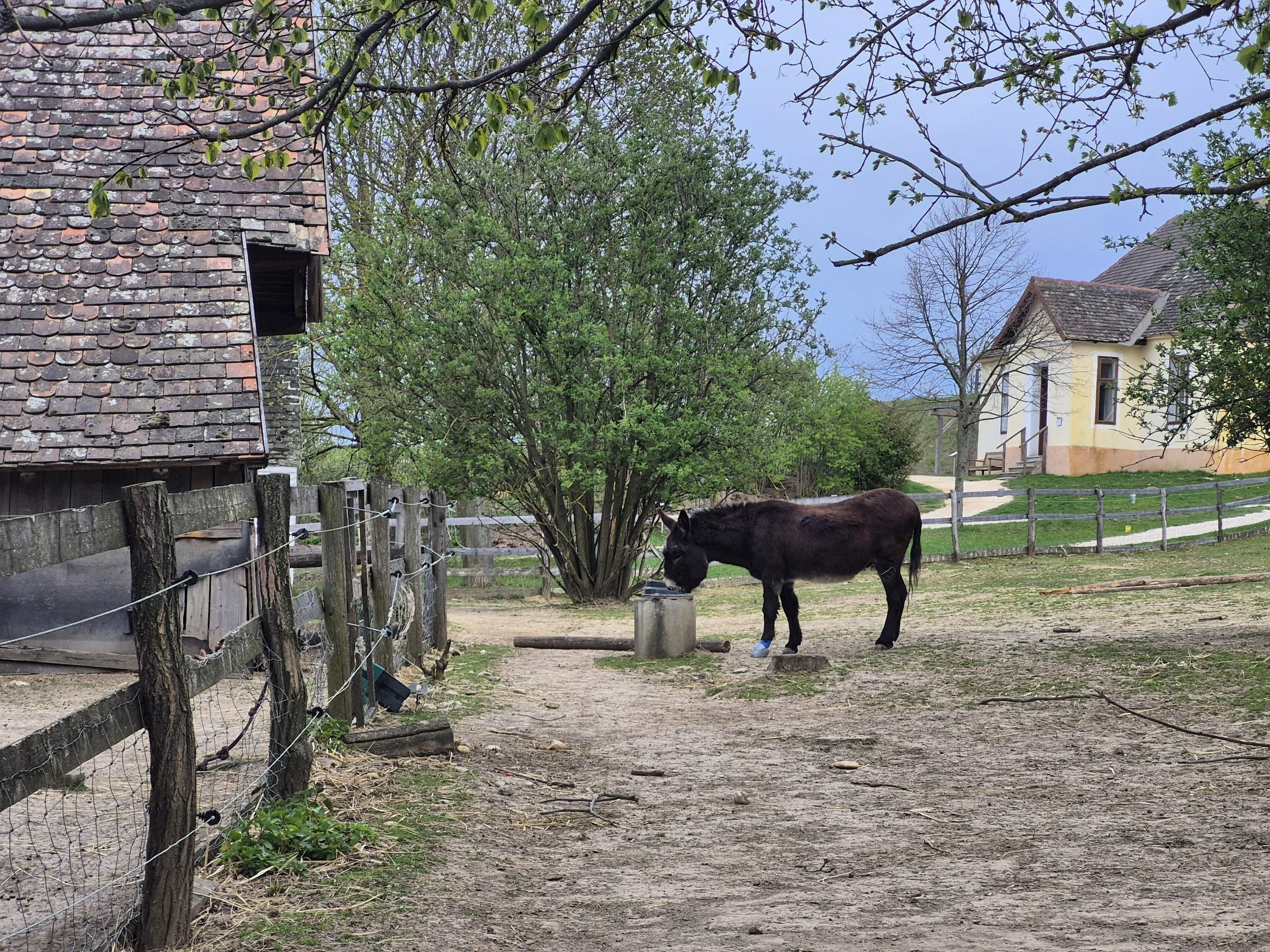Niedersulz Museum Village
Only 45 minutes from Vienna lies Niedersulz, making it perfect for a day trip.
.After breakfast, we set off by car. The place is also easy to reach by public transport.
Niedersulz itself is a normal village – charming, but nothing special. However, just beyond the village lies an open-air museum that is definitely worth a visit.
Here, houses from the Weinviertel region from around the year 1900 have been reconstructed and authentically furnished.
This gives you a good impression of everyday life in the village, as well as of school, craftsmanship, and religion.
First Impressions and the Old School
Right after the entrance, you’re greeted by a wonderful panoramic view of the entire grounds.
Following the path, you arrive directly at a farmstead where you can observe live animals – a paradise especially for children.
The first building along the way is the village school. In the entrance area, old schoolbooks are on display, then you step into the first classroom with wooden benches, slate boards, and numerous cabinets containing original teaching materials.
At the back of the building is the teacher’s apartment. You can see the kitchen, the bedroom, and get a good impression of the teacher’s life back then.
Another classroom is similarly equipped as the first, just larger.
The school building is surrounded by a beautiful school garden.
Craftsmanship and Farmsteads
Continuing along the path, you reach the cartwright’s farm. One building houses the workshop, where you can examine original tools and a well-used workbench.
In a barn, you can see various agricultural utility vehicles from the time.
There’s also a residential house.
After that, you have to choose between two paths.
We first visited the large four-sided farmstead on our left. There you’ll find the seamstress’s apartment, which also served as her studio.
Next door is the cooper’s workshop – a craft that has become rare today. Numerous wooden barrels in the courtyard bear witness to this trade.
The Water Mill
Then we chose the path to the mill. The huge complex lies picturesquely by a river and a small pond.
The first section houses the miller’s apartment, which is very luxuriously furnished.
It is significantly larger than the other apartments in the museum.
There are fine carpets on the floors, and the dishes in the cupboards look elegant. The miller was financially well off.
Right next door is the mill itself, where information boards explain the flour milling process and the importance of grain for the community.
In the garden stands a small chapel – religion was of great importance back then.
A little off to the side is the old wooden mill wheel.
From Mother-of-Pearl Turner to Shoemaker
Another interesting workshop is the mother-of-pearl button turning shop – a profession that no longer exists.
Here, buttons were once made from seashells. Traces of this craft can still be found in the sewing boxes of some older women today.
Again, the workshop and living quarters are in the same building, which was common at the time.
We continued past numerous typical farmsteads, all surrounded by beautiful gardens.
Time and again, you get a glimpse into the often very modest living conditions and everyday life of earlier times.
Unfortunately, there wasn’t enough time to see every single house – the village is simply too big for that.
Refreshments at the Inn and a Look at the Church
At midday, we stopped at the village inn, housed in an old hunter’s lodge. There, we refreshed ourselves with regional delicacies and a wonderful coffee.
Then we continued our tour.
Right next to the inn is the small village church with an adjoining cemetery. Religion played a very big role in the early 20th century.
In another residential house, the traditional dowry of a woman was vividly displayed.
You could try things out yourself, such as cracking and grinding nuts or sliding a loaf of salt dough into an oven to practice bread baking. There were also many everyday items to try out.
A Craftsman You Can Talk To
We continued to the shoemaker’s house, where a real craftsman was present that day, offering insights into this ancient, almost extinct trade.
We were shown the different materials and processing techniques, as well as the difference between the cheaper shoes worn by the majority of the population and the expensive shoes of the upper class.
Back then, shoes were still handmade and usually custom-made. That has, of course, nothing in common with today’s mass-produced cheap goods.
By the way, real craftsman presentations are held regularly in the village. You can find out who will be present on any given day right at the entrance.
Wine and Delight to Finish
We continued past numerous houses and living quarters, again and again seeing colorful gardens. All gardens were designed true to historical records.
There are both flower and herb gardens. Even fruit trees were planted accordingly, and you’ll find rare varieties of fruits and vegetables. The village is perfect for a romantic stroll.
At the end of the village, in the courtyard of a farm, there is another tavern. Here, the selection is limited to various regional wines, open-faced sandwiches, and pastries.
We tried two wines and treated ourselves to a hearty “Blunznbrot” – pure delight.
A short time later, we reached the wine cellar lane, where a wine cellar invites visitors for tastings.
We stopped there again and enjoyed the delicious drink. Alongside it, we had a slice of bread with egg spread. Around the cellar, you’ll find information about winemaking and can see a typical press house.
Return Walk with an Animal Stop
Afterwards, we strolled a bit more through the village.
On the way back to the exit, we visited the farm we had briefly passed upon arrival.
There are goats, donkeys, sheep, rabbits, geese, chicken, and many other animals. It’s not just children who enjoy it there.
Tired and happy, we finally made our way home. We will definitely visit this lovely village again.

